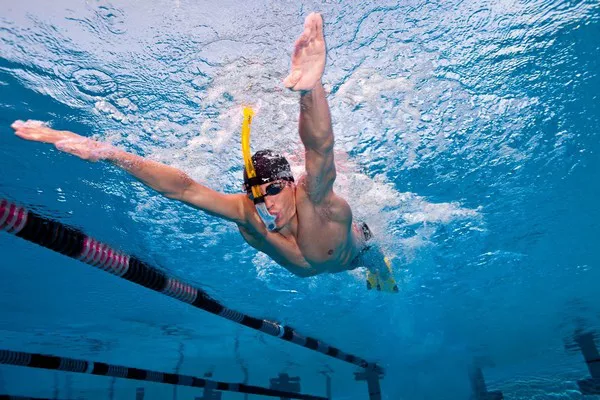Swimming is not merely a recreational activity; it is a holistic exercise that engages the entire body, enhancing cardiovascular health, muscular endurance, and flexibility. Whether you are a seasoned swimmer or a novice dipping your toes into the waters, the snorkel emerges as an indispensable tool, revolutionizing the way we approach aquatic fitness. In this comprehensive guide, we delve into the depths of snorkel swimming, exploring its benefits, techniques, and applications, empowering you to navigate the waters with finesse and efficiency.
Understanding the Snorkel: A Versatile Aquatic Companion
At its core, a snorkel is a simple yet powerful apparatus designed to allow swimmers to breathe while maintaining a horizontal position in the water. Consisting of a mouthpiece, a tube, and a purge valve, modern snorkels are engineered to optimize airflow, minimize water ingress, and facilitate unobstructed respiration.
Benefits Beyond Breathing: Unveiling the Multifaceted Advantages of Snorkel Swimming
Embracing the snorkel transcends mere convenience; it unlocks a plethora of benefits that elevate your swimming experience to new heights:
1. Improved Technique: By eliminating the need to turn the head for breathing, snorkels promote streamlined body positioning, facilitating smoother strokes and enhanced propulsion.
2. Enhanced Endurance: Freed from the constraints of breath control, swimmers can sustain longer training sessions, building cardiovascular stamina and muscular endurance.
3. Focused Stroke Development: With the respiratory aspect automated, swimmers can allocate their attention to refining specific aspects of their stroke mechanics, such as arm entry, catch, and recovery.
4. Reduced Neck Strain: Traditional breathing techniques often induce neck tension and fatigue. Snorkels alleviate this strain, allowing for a more relaxed and sustainable swimming posture.
5. Increased Comfort and Relaxation: Breathing effortlessly through a snorkel fosters a sense of calmness and relaxation, promoting mindfulness and enjoyment during swim sessions.
Mastering the Art of Snorkel Swimming: Techniques for Optimal Performance
While incorporating a snorkel into your swimming routine may seem straightforward, mastering the associated techniques is essential for maximizing its efficacy:
1. Proper Fit and Adjustment: Ensure that the snorkel mouthpiece fits comfortably in your mouth, with the tube positioned securely above your head. Adjust the head strap for a snug yet non-restrictive fit.
2. Body Positioning: Maintain a horizontal body position, with your head aligned with your spine. Keep your gaze downward, focusing on the pool bottom or the lane markings.
3. Breathing Technique: Breathe naturally and rhythmically through the snorkel, allowing the purge valve to expel any residual water. Avoid forcefully exhaling or inhaling, as this may disrupt your buoyancy and stability.
4. Stroke Coordination: Coordinate your arm movements with your breathing rhythm, ensuring smooth transitions between strokes. Focus on maintaining symmetry and balance throughout each cycle.
5. Integration with Drills and Sets: Incorporate snorkel swimming into your training regimen by integrating it with specific drills and sets designed to target different aspects of your technique and fitness goals.
Navigating Common Challenges: Troubleshooting Tips for Snorkel Swimming
While snorkel swimming offers a myriad of benefits, encountering challenges along the way is inevitable. Here are some common issues and practical solutions to overcome them:
1. Water Ingress: If water enters the snorkel tube, perform a quick purge by exhaling forcefully through the mouthpiece while tilting your head downward. Adjust the head strap if necessary to minimize leakage.
2. Discomfort or Jaw Fatigue: If you experience discomfort or jaw fatigue during prolonged use, take regular breaks to rest and rehydrate. Experiment with different mouthpiece designs or consider using a snorkel with a padded mouthpiece for added comfort.
3. Loss of Peripheral Vision: To maintain awareness of your surroundings and fellow swimmers, practice peripheral vision exercises while wearing the snorkel. Gradually adjust to the altered field of view until it becomes second nature.
4. Breathing Resistance: If you encounter difficulty breathing through the snorkel, focus on relaxing your facial muscles and maintaining steady, controlled breaths. Gradually increase your lung capacity and respiratory efficiency through targeted breathing exercises.
Conclusion
In conclusion, the snorkel serves as more than just a breathing apparatus; it is a gateway to unlocking your full aquatic potential. By embracing snorkel swimming and mastering its associated techniques, you can enhance your swimming performance, refine your stroke mechanics, and embark on a journey of continuous improvement and exploration in the water. So, don your snorkel, dive into the depths, and let the rhythmic cadence of your breath propel you toward swimming excellence.

